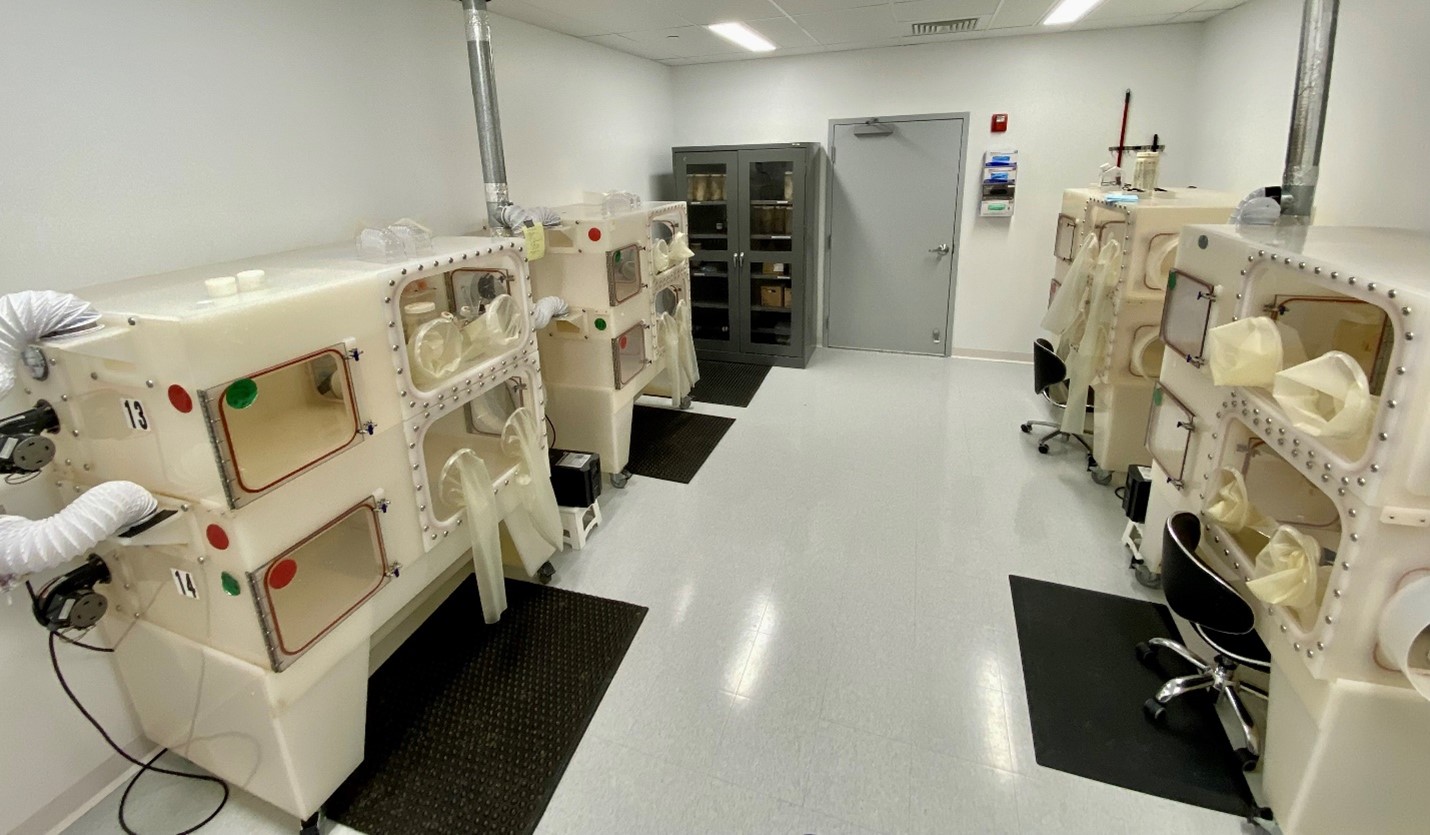- Research Services
- Capabilities
- About Us
- Resources
- Contact Us
 Housing/Handling/Husbandry Strategies
Housing/Handling/Husbandry Strategies Germ-Free, Gnotobiotic, and Quarantine Isolators
Germ-Free, Gnotobiotic, and Quarantine Isolators Microbiology
Microbiology Sequencing and Metagenomics
Sequencing and Metagenomics Microbiology and Microbiome Capabilities
Microbiology and Microbiome CapabilitiesBioModels has extensive experience with a variety of microbiology techniques that can support studies which focus on infection and disease development as well as studies that focus on the role of the microbiome. We offer customizable approaches to consider the microbiome in a variety of experimental systems, with equipment and capabilities tailored to explore questions related to microbiome modulation for treatment of disease and therapeutic drug development.
BioModels offers a fully equipped facility to support:
Housing, handling, and husbandry strategies are critical variables in microbiome models, infectious disease models, and any rodent model where the microbiome may be a consideration. Decisions on how to handle, house, and perform animal husbandry for a project are dependent on the stability of the animals’ microbiome (either reconstituted or endogenous), how susceptible the microbiome is to disruption via contamination, and how likely the bacteria are to become a contaminant itself (whether within or outside a study). BioModels offers a wide range of customizable options that ensure every experiment utilizes the most appropriate housing, handling, and husbandry strategy.



Barrier and Germ-Free Vivariums
Utilize germ-free, gnotobiotic, or pathogen models with confidence in BioModels’ germ-free, gnotobiotic, and quarantine isolators.
Germ-free and gnotobiotic mice provide an ideal model system for microbiome research. The lack of an endogenous microbiome in germ-free animals maximizes engraftment with a therapeutic microbiome, removes potentially confounding microbiome-based data interpretation variables, and enables direct determination of microbiome impacts on disease phenotypes. Validated quality control measures minimize contamination risk, and studies are available with or without microbial monitoring.
Isolators can also be used to house animals with a high infectious-risk, or for any experiment where minimizing the risk of outside/cross-contamination is a priority.

For studies utilizing germ-free isolator housing, all in-life animal manipulations occur within the isolator, and studies are designed for minimal isolator entries.
Microbiology capabilities are critical in the evaluation of microbiome- or pathogen-focused therapeutics of disease indications. Microbiome/bacteria-based test articles (“bugs as drugs”) or bacterial pathogens for infectious disease models may require fresh culture preparations prior to in vivo administration, and even thaw-and-dose bacterial formulations benefit from viability checks of the thawed material. The generation of growth curves ensures consistent infection/inoculation doses, and restrictive agar paradigms enable engraftment monitoring via fecal culture. For anaerobic bacteria, exposure to oxygen is eliminated when working in BioModels’ anaerobic chamber (Coy Lab Products).
BioModels offers microbiology contract research services both in support of rodent disease models as well as for independent projects where aerobic and anaerobic bacterial culture (BSL-1 and BSL-2), fungal culture (BSL-1 and BSL-2), and spectrophotometry are utilized.

Citrobacter rodentium is grown under aerobic conditions at 37⁰C with agitation for 14 hours. Aliquots are removed on an hourly basis for OD600 measurement, serial diluting, and agar-plating. Plates are incubated overnight at 37⁰C. CFU/mL is enumerated the next day.

Candida albicans is grown under aerobic conditions at 37⁰C with agitation for 16 hours. Aliquots are removed on an hourly basis for OD600 measurement, serial diluting, and agar-plating. Plates are incubated overnight at 30⁰C. CFU/mL is enumerated the next day.
Characterize the microbiome and associated endpoints via our collaboration with CosmosID. The CosmosID team offers end-to-end metagenomics services; full genome sequencing, genome analysis and phylogenetic analysis; and industry leading bioinformatics using Next Generation sequencing technologies.



